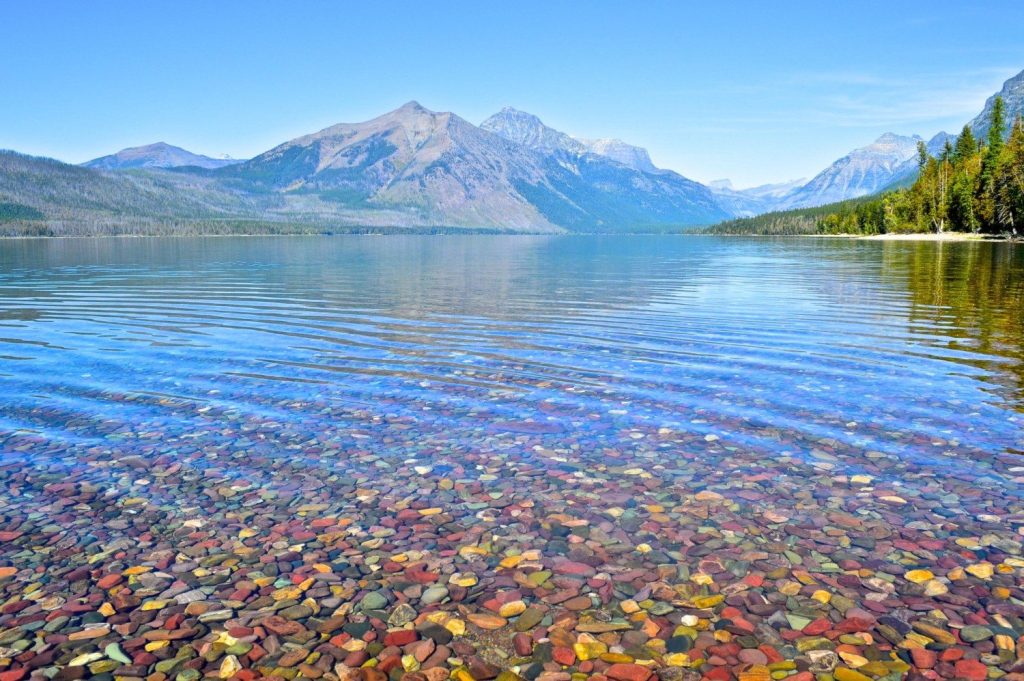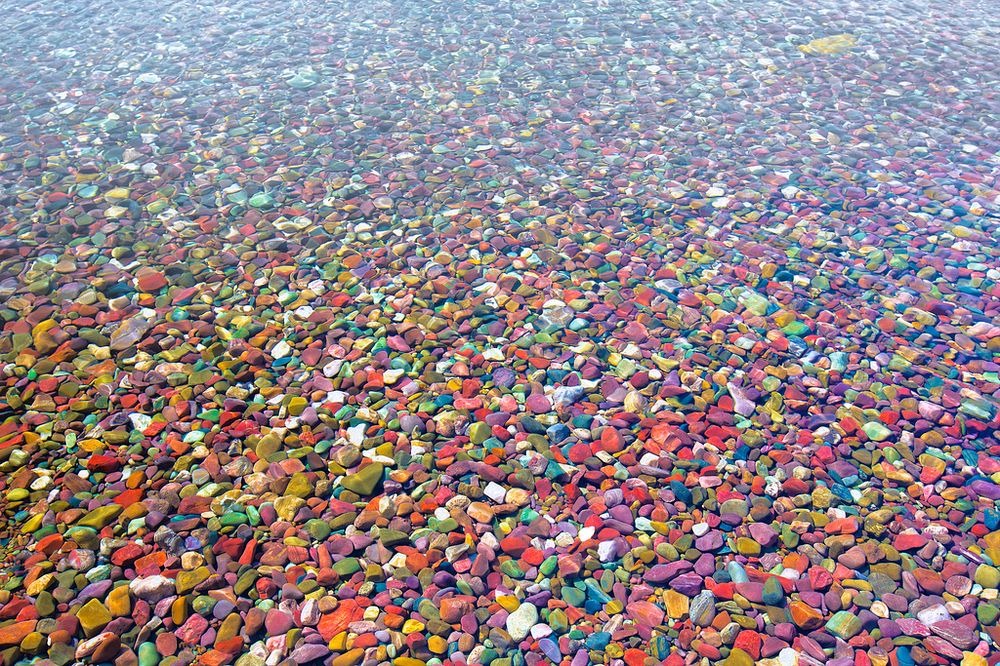More than 700 lakes may be found in Glacier National Park, which is located in the U.S. state of Montana, near the Canadian border. However, only 131 of these lakes have names. Around 200 lakes are larger than five acres, and a dozen of them are thousands of acres in size, which is exceptional for mountain lakes. In addition, the lakes’ waters are extraordinarily clear. This is due to the year-round low temperatures that prevent plankton growth. At depths of 30 feet or more, it is fairly uncommon to discern details on the bottom of the lakes.

The presence of a variety of coloured rocks and pebbles just below the water surface and on the shoreline of several of these lakes is one of their most remarkable features. The rocks have a variety of colours, ranging from dark red to maroon to green to blue. On the western half of the park, coloured stones abound along the shores of Lake McDonald. With a surface area of 6,823 acres, Lake McDonald is the largest of Glacier National Park’s lakes. It is also the largest, with a length of approximately 15 kilometres, and the deepest, with a depth of 141 metres.

Green rocks can be found in Otokomi Lake, whereas the dark-colored rocks located at the upper end of Lake McDonald, along McDonald Creek, and around Trout Lake are the consequence of heat and pressure applied to red and green iron-rich rocks.
These rocks may be found all across Glacier National Park and were produced at various times. When the glaciers arrived, they shattered the boulders into tiny bits, which were swept away by the rivers. Many of them ended up in lakes and “tarns,” which are lakes created by filling the bottoms of ice-scoured amphitheatres. They were then eroded into smooth pebbles by water.

If exploring Route 66 is on your bucket list, then you will LOVE this!

















